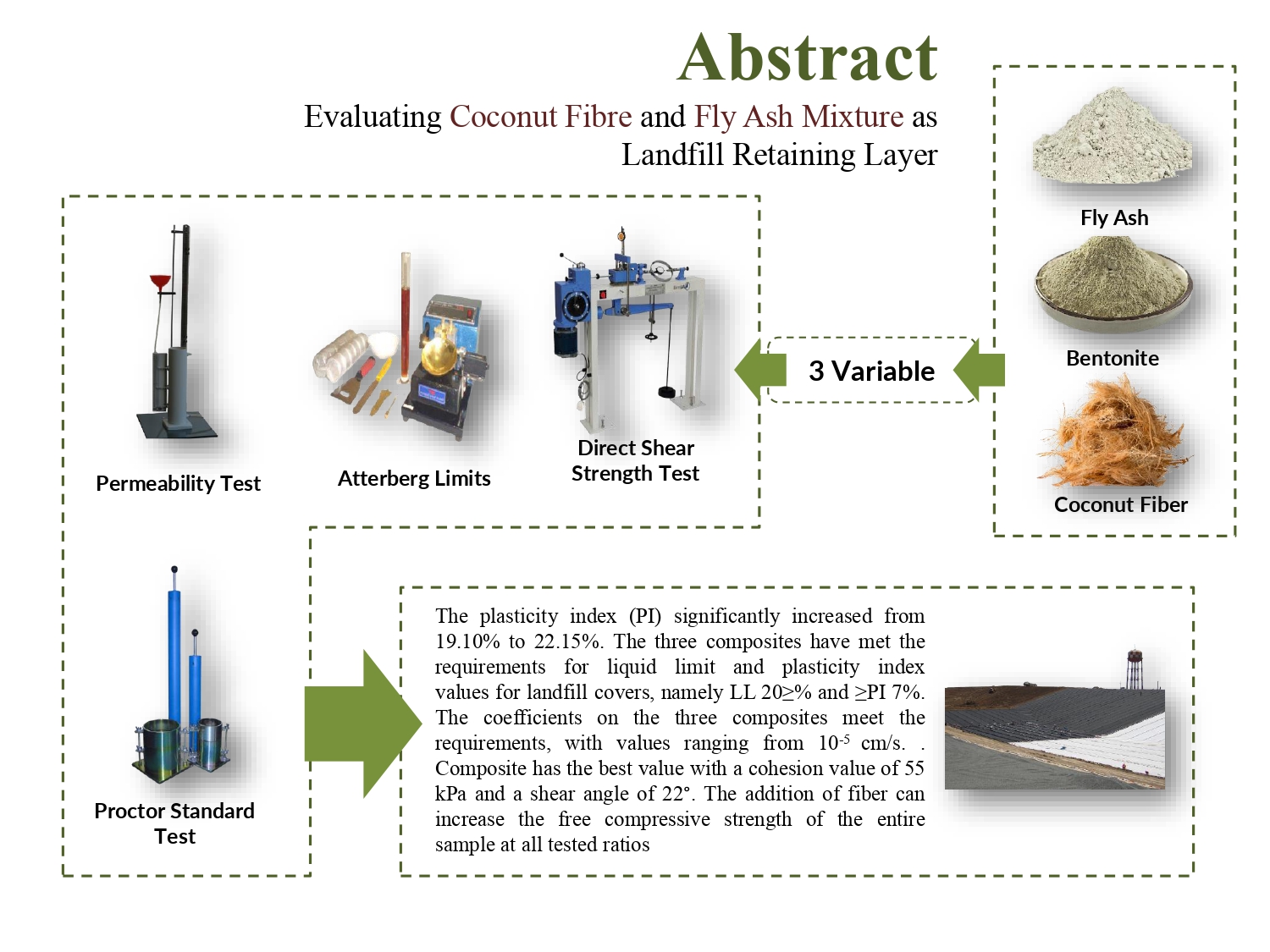
This study utilized a series of experimental tests, including the Atterberg limit, standard Proctor, permeability, and direct shear tests. Three composites were investigated: 85% fly ash-10% bentonite (V1), 90% fly ash-5% bentonite (V2), and 95% fly ash-0% bentonite (V3). All composites contained 5% coconut fiber. The plasticity index (PI) increased significantly from 19.10% to 22.15%, with a change in bentonite content from 0% to 10%. All composite met the landfill liner plasticity index standards. The permeability values were low and satisfied local criteria, namely 1.052 x 10-5 (V1), 1.260 x 10-5 (V2), and 1.394 x 10-5 (V3). Composite V2 has the best value with a cohesion value of 55 kPa and a shear angle of 22°.Therefore, composite V3 was the most promising composite as an alternative covering material for landfills because it has the lowest atterberg limits results, the lowest OMC, and the results from the direct shear test that meet the criteria even though it is not the best result among the three variations. However, by supporting the OMC value and good plasticity, the V3 composite was chosen. This study is beneficial and valuable in the engineering, selection, and design of materials used for the construction of landfill liners. .
Total file downloads: 12